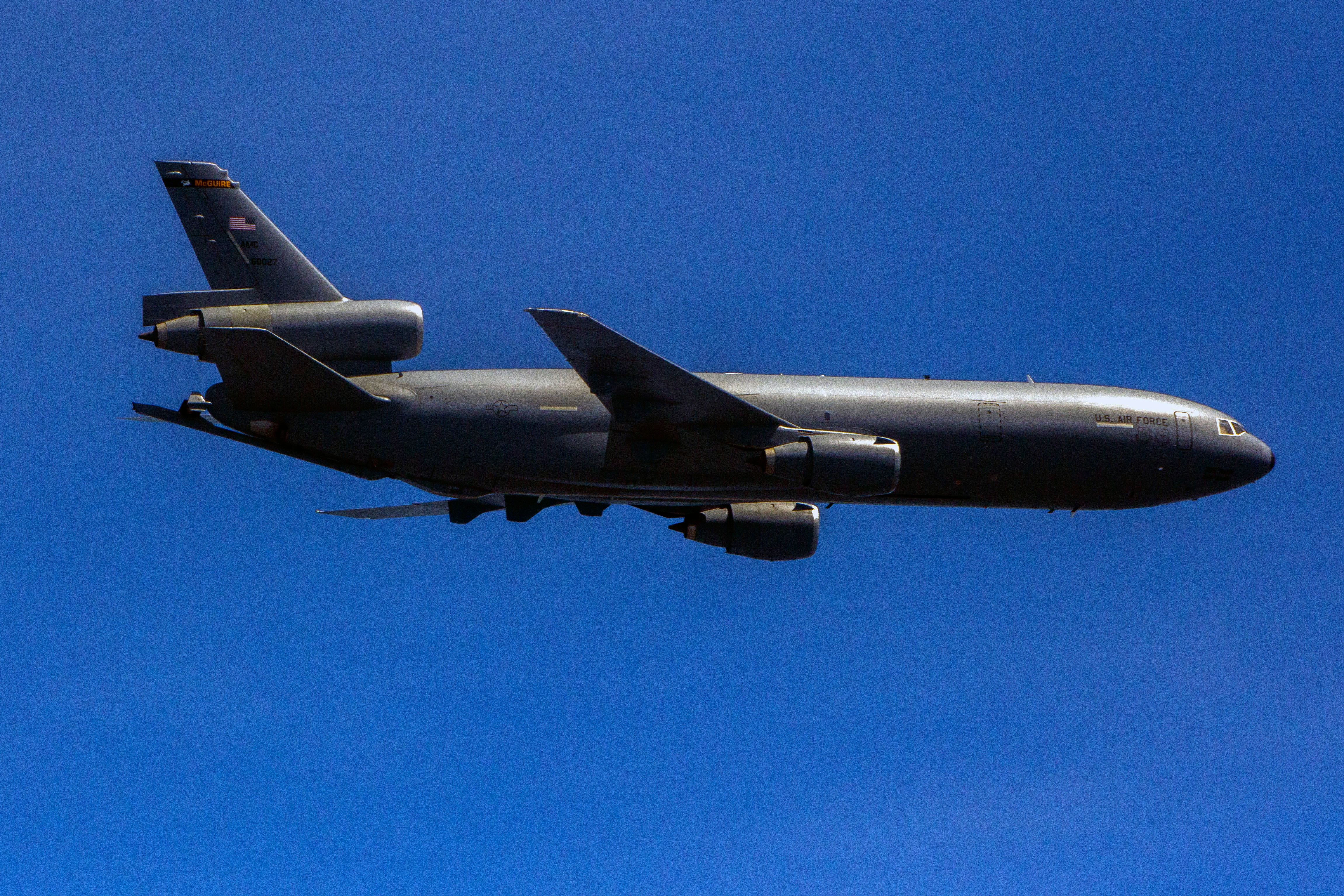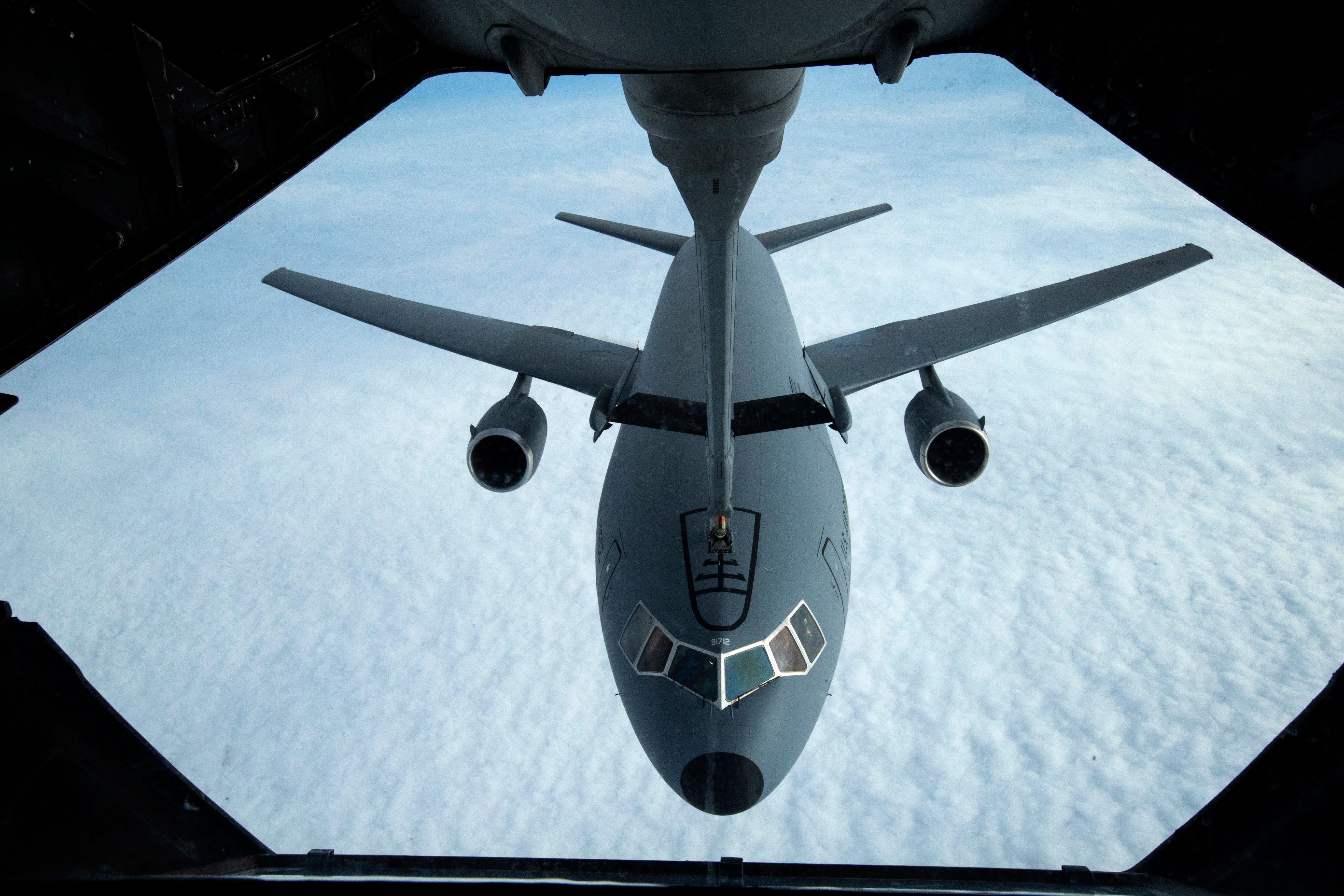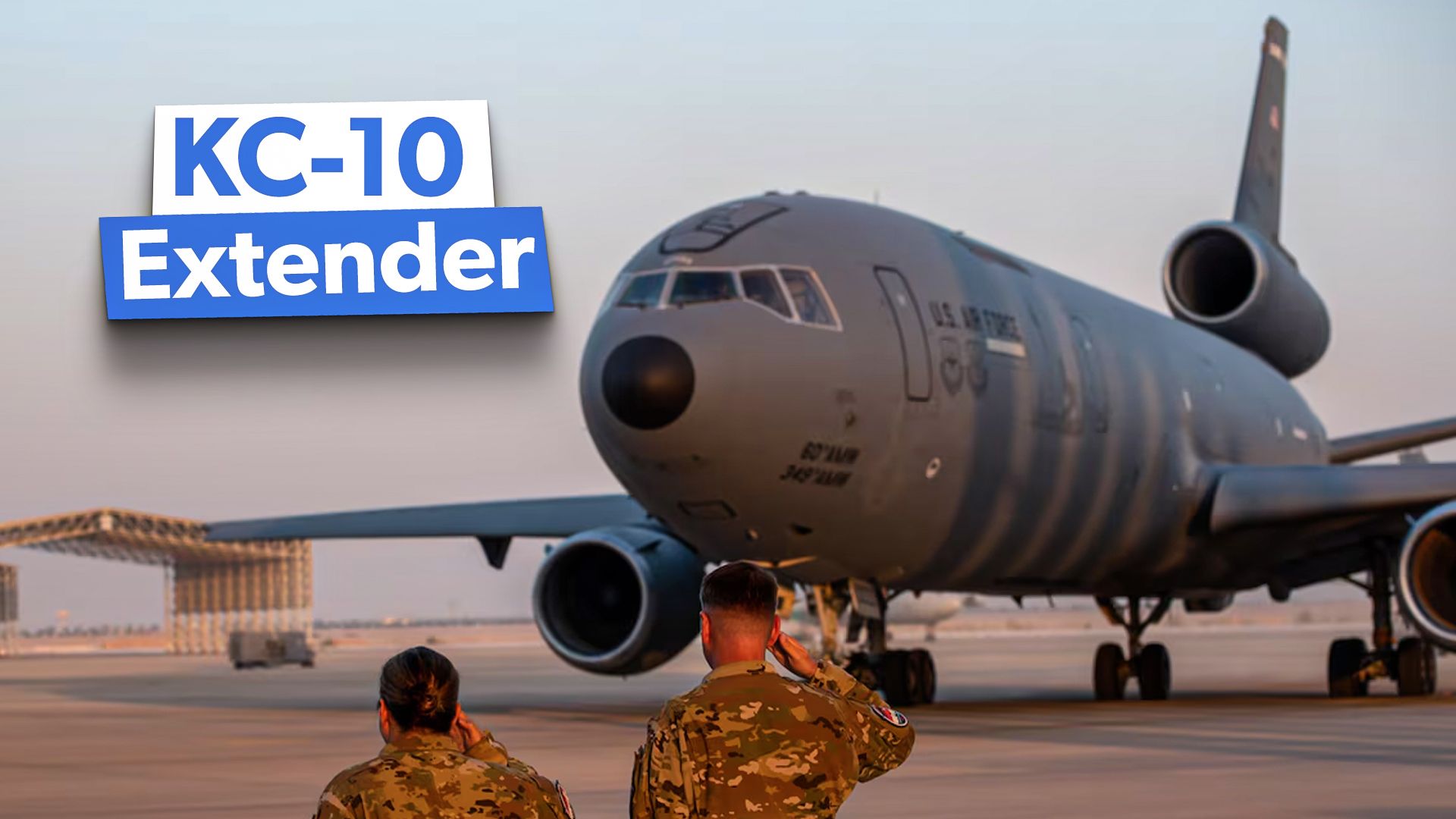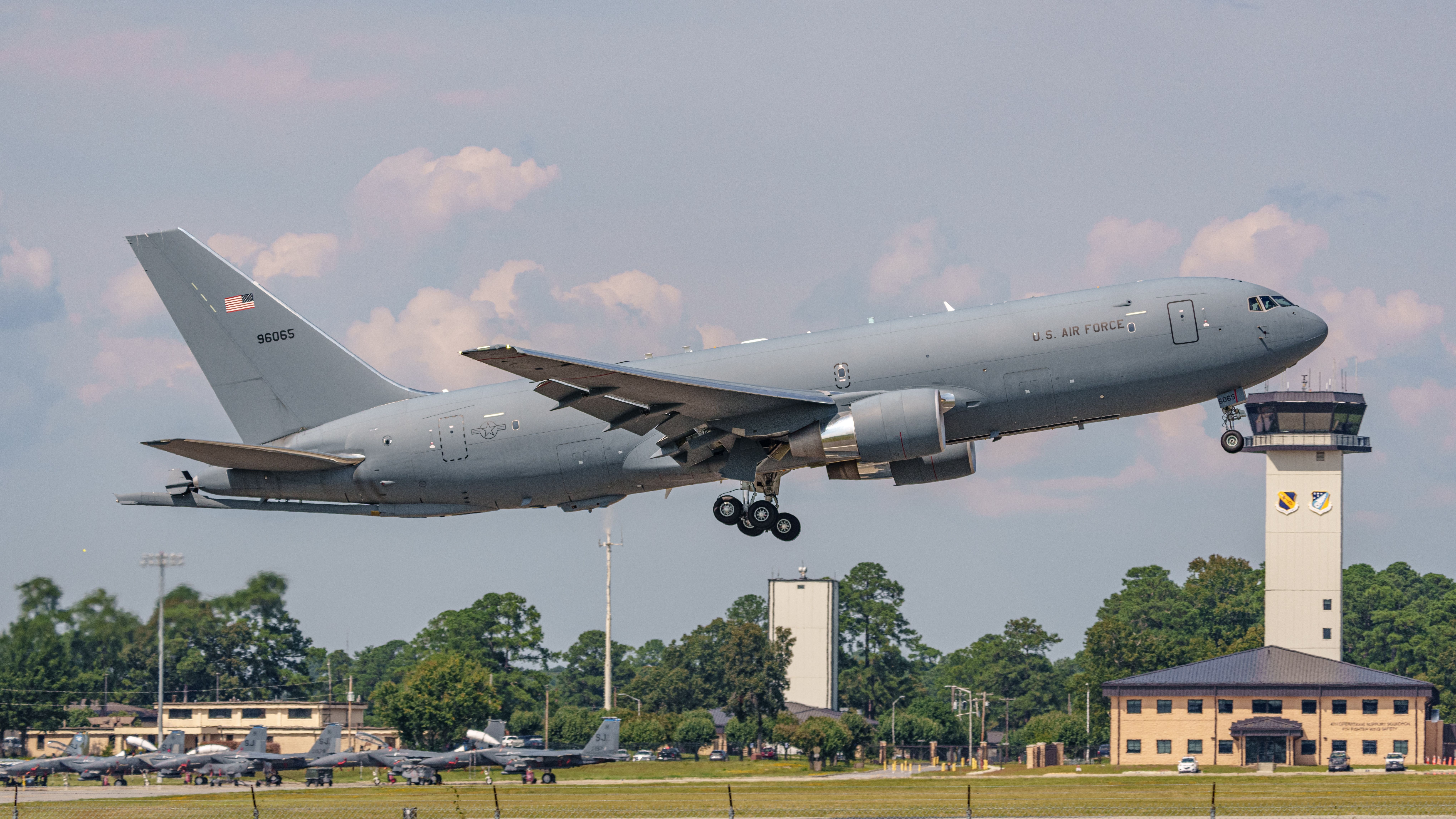Summary
- The KC-10 is being retired earlier than expected to make way for the newer and more cost-effective KC-46 Pegasus.
- The retirement of the KC-10 is part of a broader Air Force effort to update its aging aircraft fleet.
- The KC-10 served faithfully in numerous operations, including Operation Desert Storm and Operation Iraqi Freedom.
One of the Renaissance-era seer Nostradamus’s (or Michel de Nostredame’s if you prefer) famous predictions was “The young lion will overcome the older one.” Believers in the validity of Nostradamus’s predictions have interpreted that as a prediction of the death of King Henry II of France, who died in a jousting tournament when a younger opponent hit his face and caused a massive wound.

Related
5 Fast Facts On The US Air Force KC-10 Extender
Aerial refueling is invaluable to the US and its military allies’ aerial operations. For decades, the KC-10 has been an essential provider.
The validity of the interpretation of Nostradamus’s quatrain can be debated until the cows come home. One can say with 100% certainty, however, that Monsieur de Nostredame was NOT envisioning the KC-10 Extender and KC-135 Stratotanker as the respective young and old lion. Because even though the “younger (newer, that is) KC-10 was designed to supplement the KC-135 as the US Air Force’s midair refueling aircraft, the newer plane is not “overcoming,” or more accurately “outlasting,” the older one, as the Extender is actually the first of the two planes set to be retired. Simple Flying now ponders the question of why the Extender isn’t being extended.
The KC-10’s service history, in brief
The KC-10, which was based on the 1970 vintage McDonnell Douglas DC-10 civilian airliner, made its maiden flight on July 12, 1980, and officially entered into operational service with the US Air Force on March 1, 1981. A total of 60 KC-10 airframes were built between 1979 and 1987. It was designed to supplement the Boeing KC-135 Stratotanker after the latter plane as the latter was assessed as being somewhat lacking in flexibility during operations in the Middle East.
For the basis of comparison and contrast, the KC-135 made its own maiden flight on August 31, 1956, and officially entered operational service in June 1957.
The Stratotanker’s inflexibility stems from the fact that it only uses a boom system for refueling operations, which is solely compatible with USAF aircraft. By contrast, the Extender is more flexible and more adaptable to joint service air ops due to its use of a probe-and-drogue refueling system with the US Navy, US Marine Corps, and many allied nations’ warbirds. What’s more, the KC-10 can carry **double** the amount of fuel that the KC-135 does. The early 20th-century Italian airpower theorist General Giulio Douhet, who coined the maxim “Flexibility is the key to airpower,” would’ve approved of the Extender wholeheartedly.
The KC-10’s added flexibility and versatility enabled it to serve the USAF faithfully in the following conflicts:
- Operation El Dorado Canyon (the 1986 bombing of Libya)
- Operation Desert Storm (1991 Persian Gulf War)
- Operation Allied Force (1999 NATO bombing of Yugoslavia)
- Operation Enduring Freedom (OEF; Afghanistan phase of the Global War on Terror [GWOT] beginning in 2001)
- Operation Iraqi Freedom (2003 Iraq War)
In the words of Lt. Col. Andrew Baer, 9th Air Refueling Squadron (ARS) commander, in an interview with the 60th Air Mobility Wing:
“What’s so awesome is this airplane has a long history. It was in (Operations) Urgent Fury, Enduring Freedom, Allies Refuge, Desert Storm, Iraqi Freedom, New Dawn, Inherent Resolve… you name it, this jet has seen it.”

Related
42 Years Of Flight: The McDonnell Douglas KC-10 Extender’s History
A look at one of the United States Air Force’s key assets.
Because of the Extended’s impressive performance, expectations at the beginning of the 21st century were that the Extender’s service would extend until 2043.
So, why early retirement?
Alas, as ESPN College GameDay’s Lee Corso is fond of saying, “Not so fast, my friend.” The warbird’s earlier-than-originally-expected retirement party began in July 2020, when the specimen bearing tail number 86-0036, was transferred to the 309th Aerospace Maintenance and Regeneration Group (AMARG) for storage at “The Boneyard” at Davis Monthan AFB, Arizona. Fast-forward to January 2023, and the USAF announced that all KC-10s will be retired by September 30, 2024 (just over two months away as I type these words). Accordingly, the Extender flew its last combat sortie on October 5, 2023.
But why? Simple Flying’s Joshua Kupietzky sheds a lot of light on the subject in an October 2023 article:
“The KC-10’s exit from combat mission is part of a sweeping plan by the Air Force to overhaul its aging aircraft fleet. Not only will newer aircraft be cheaper to maintain, but they can better withstand the demands of future conflicts.”

Related
Combat Missions Complete: What’s Next For The McDonnell Douglas KC-10 Extender?
A look at what the future holds for this military aircraft.
Mr. Kupietzky continues from there:
“Retiring the KC-10 clears the path for Boeing’s KC-46 Pegasus tanker. In addition to having a higher payload than the KC-10, the Pegasus can carry over 212,000 pounds of fuel, 60 passengers, and 65,000 pounds of cargo. The Pegasus aircraft features more defensive measures that will allow it to thwart any possible enemy attacks. It is also testing advanced communication software that could enable it to be a data-sharing hub for US personnel in the vicinity.”
Initial talk amongst the USAF brass about retiring the KC-10 kicked off in September 2013 as a “trial balloon” to call attention to Air Force operating cost issues. The idea gained further momentum in Fiscal Year (FY) 2015 in response to sequestration budget cuts.
In July 2021, the 2d ARS became the first Extender squadron to start conversion to the Pegasus.
Postscript
A fitting tribute to the KC-10 was paid by Brig. Gen. Akshai M. Gandhi, then-commander of the 378th Air Expeditionary Wing (AEW), during an inactivation ceremony held on October 4, 2023, at Prince Sultan Air Base (PSAB), Saudi Arabia:
““In the 1 1/2 years that the KC-10 has been at PSAB, they’ve accomplished over 1,300 missions with over 9,000 flying hours, and delivered nearly 73 million pounds of fuel to over 11,000 receivers. To the entire team that has made the KC-10 the legacy that it is, congratulations on a job well done.”
Luckily for us aviation history buffs, at least a few of these venerable gas-toting warbirds are being preserved for posterity as opposed to all of them being simply consigned to the Boneyard:


